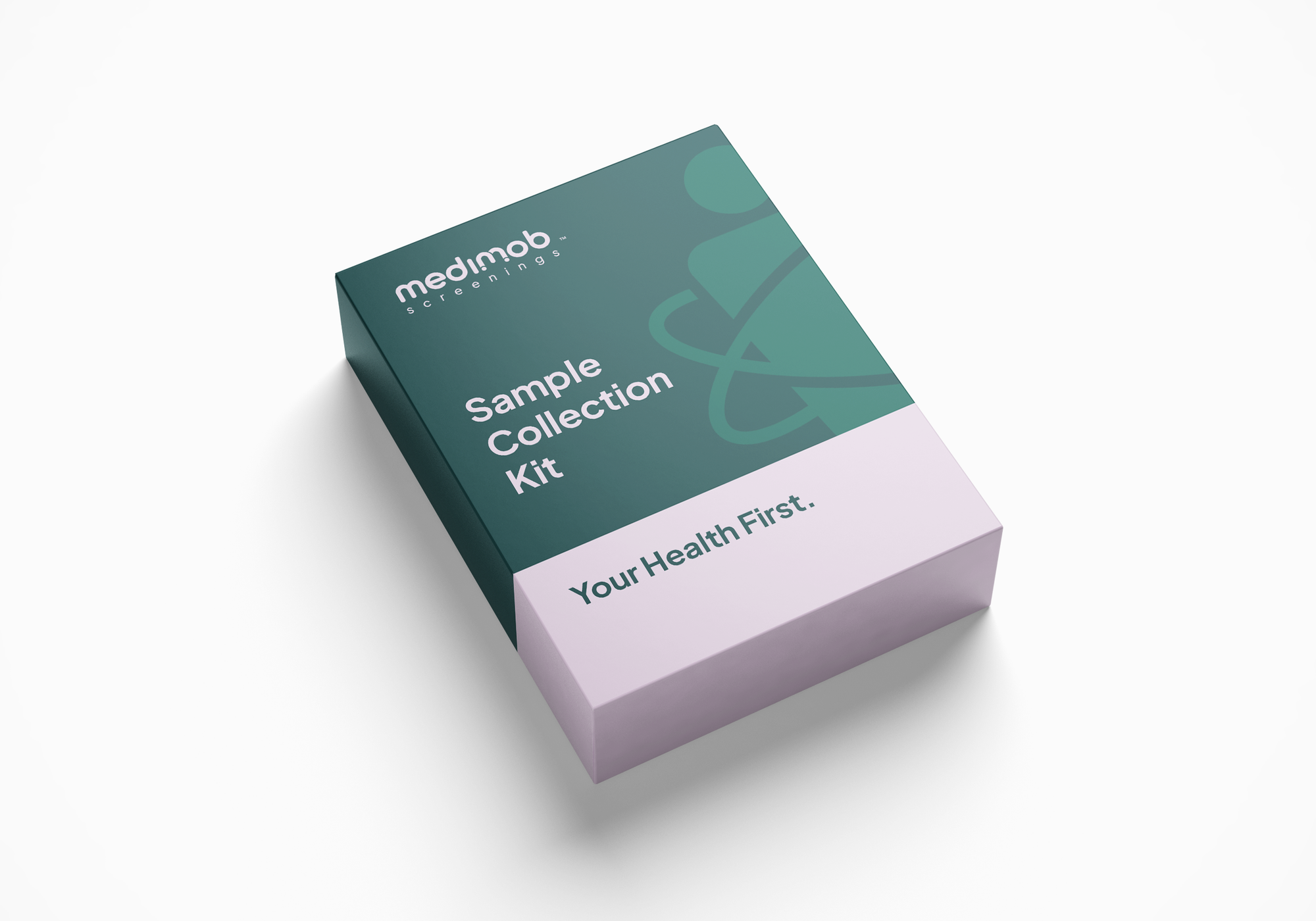Low Testosterone Screening Questionnaire - The Adam Test
The ADAM test screens for low testosterone symptoms but requires blood tests for confirmation. Learn its strengths, limitations, and clinical use cases.

Testosterone deficiency affects ~40% of men over 45, manifesting through disruptive symptoms like chronic fatigue, diminished libido, and cognitive fog. The Androgen Deficiency in Aging Males (ADAM) questionnaire, developed in 2000 at Saint Louis University, emerged as a rapid clinical screening tool to identify men at risk of hypogonadism. Unlike costly blood tests, this 10-item instrument provides immediate symptomatic insights – yet requires nuanced interpretation. This analysis examines the ADAM test's scientific foundations, clinical utility, and critical limitations.
Full Testosterone Check (5 Biomarkers) From the Comfort Of Your Home
What is the ADAM Test?
The ADAM questionnaire assesses 10 hallmark symptoms of low testosterone through yes/no responses. Its structure targets three symptomatic domains:
Core Symptom Domains:
- Sexual Health: Reduced libido, weak erections, diminished sexual performance
- Physical Function: Loss of endurance, decreased muscle strength, height reduction
- Psychological State: Low energy, sadness/grumpiness, reduced life enjoyment, work performance decline
A positive screen requires "Yes" to questions 1 or 7 (libido/erections) OR any three other symptoms. This design prioritises sensitivity to avoid missing potential cases.
Scientific Validity and Performance Metrics
Sensitivity vs. Specificity Dilemma:
Global studies consistently show high sensitivity (88-97%) but poor specificity (30-47%):
- Pakistan study (n=255): 90.1% sensitivity, 47.3% specificity
- US validation: 88% sensitivity, 60% specificity
- Spanish analysis: 84% sensitivity, 36.6% specificity
This means while 90% of hypogonadal men screen positive, over 50% with normal testosterone also "fail" the test. The low specificity stems from symptom overlap with depression, obesity, and chronic illnesses.
Correlation with Blood Tests:
When compared with serum testosterone (gold standard):
- Negative Predictive Value (NPV): 90.8% – a "negative" ADAM reliably excludes hypogonadism
- Positive Predictive Value (PPV): Only 45.3% – positives require biochemical confirmation
Table 1: ADAM Test Performance Across Populations
| Population | Sensitivity | Specificity | PPV | NPV |
|---|---|---|---|---|
| Pakistani | 90.1% | 47.3% | 45.3% | 90.8% |
| US (Original) | 88% | 60% | N/A | N/A |
| Kenyan | 88.1% | 44.7% | N/A | N/A |
| Chinese | 86% | 40% | N/A | N/A |
The Quantitative ADAM (qADAM) Evolution
To address the original test's inability to quantify symptom severity, researchers developed the qADAM– replacing yes/no with a 1-5 Likert scale:
- Total Score Range: 10 (severe symptoms) to 50 (asymptomatic)
- Clinical Advantages:
- Correlates with serum testosterone (r=0.345, p=0.046)
- Tracks treatment response (e.g., TRT efficacy)
- Aligns with sexual function scores (SHIM: r=0.438, p=0.001)
Despite improvements, qADAM still cannot replace blood tests due to persistent specificity limitations.
Full Testosterone Check (5 Biomarkers) From the Comfort Of Your Home
What the ADAM Test Can and Cannot Reveal
Strengths:
- Symptom Triaging: Efficiently identifies men needing blood tests
- Early Intervention: Flags subtle changes before clinical hypogonadism develops
- Resource Optimisation: Crucial in low-income settings where labs are inaccessible
Critical Limitations:
- False Positives: Mood/energy symptoms (Q2, Q5, Q6) commonly yield false positives
- Non-Diagnostic: Never confirms hypogonadism – requires serum testosterone <300 ng/dL
- Circadian Blindness: Doesn't account for testosterone's diurnal fluctuations
- Comorbidity Confounders: Cannot distinguish from depression, sleep apnea, or thyroid disorders
Clinical Integration Guidelines
Step-by-Step Application:
- Screen: Administer ADAM during routine physicals for men >40 with non-specific symptoms
- Interpret: Positive = 3+ "Yes" OR "Yes" to Q1/Q7
- Confirm: Order morning (7-10 AM) total testosterone test for positives
- Monitor: Use qADAM quarterly during testosterone therapy to track symptom response
When to Override ADAM Results:
- Normal ADAM + Symptoms: Test testosterone if strong clinical suspicion exists
- Positive ADAM + Normal T: Investigate depression, diabetes, or cardiovascular issues
Table 2: ADAM vs. Diagnostic Blood Testing
| Parameter | ADAM Questionnaire | Serum Testosterone Test |
|---|---|---|
| Cost | Free | $70-$200 10 |
| Turnaround Time | 5 minutes | 24-72 hours |
| Measures | Symptoms | Hormone levels |
| Diagnosis Capable | No | Yes |
| Gold Standard | No | Yes 710 |
Future Directions and Alternatives
ADAM's Role in Modern Medicine:
Despite limitations, ADAM remains valuable for initial triage but requires pairing with:
- Second-Line Questionnaires: Aging Males' Symptoms (AMS) scale for severity grading
- Free Testosterone Assessment: More accurate than total testosterone in obese/elderly men
- Population-Specific Calibration: Pakistani data shows libido questions (Q1/Q7) have 75.5% specificity
Emerging Best Practices:
- Combined Screening: ADAM → AMS → Morning Total + Free Testosterone
- Specialist Referral: Endocrinologists/urologists adhere to guidelines 2x more than PCPs
Conclusion: A Screening Tool, Not a Diagnostic Arbiter
The ADAM test delivers exceptional sensitivity (88-97%) but suffers from critical specificity flaws (30-47%). Its core value lies in rapid identification of symptomatic men needing biochemical confirmation – particularly in resource-limited settings. As hypogonadism screening evolves, the qADAM and symptom-focused refinements offer pathways to enhanced precision. Nevertheless, morning serum testosterone measurement remains indispensable for definitive diagnosis. Clinicians must recognise ADAM as a doorway to diagnosis, never the destination.
Full Testosterone Check (5 Biomarkers) From the Comfort Of Your Home
References
- Mohamed O, Freundlich RE, Dakik HK, et al. (2010) 'The quantitative ADAM questionnaire: a new tool in quantifying the severity of hypogonadism', International Journal of Impotence Research, 22(1), pp.20-24. doi:10.1038/ijir.2009.35 15
- Morley JE et al. (2000) 'Validation of a screening questionnaire for androgen deficiency in aging males', Metabolism, 49(9), pp.1239-1242. 911
- Cureus (2020) 'Sensitivity, Specificity and Accuracy of Androgen Deficiency in Aging Male Questionnaire in Pakistan', Cureus, 12(11):e11788. doi:10.7759/cureus.11788 3
- LeWine HE (2023) 'What's the best way to test for low testosterone?', Harvard Health Publishing. Available at: https://www.health.harvard.edu/mens-health/whats-the-best-way-to-test-for-low-testosterone 7
- WebMD (2024) 'Testosterone Test: Purpose, Procedure, and Results'. Available at: https://www.webmd.com/a-to-z-guides/testosterone-test 10
- Baillargeon J et al. (2015) 'Screening and Monitoring in Men Prescribed Testosterone Therapy', Public Health Reports, 130(2), pp.143–152. doi:10.1177/003335491513000207 16


